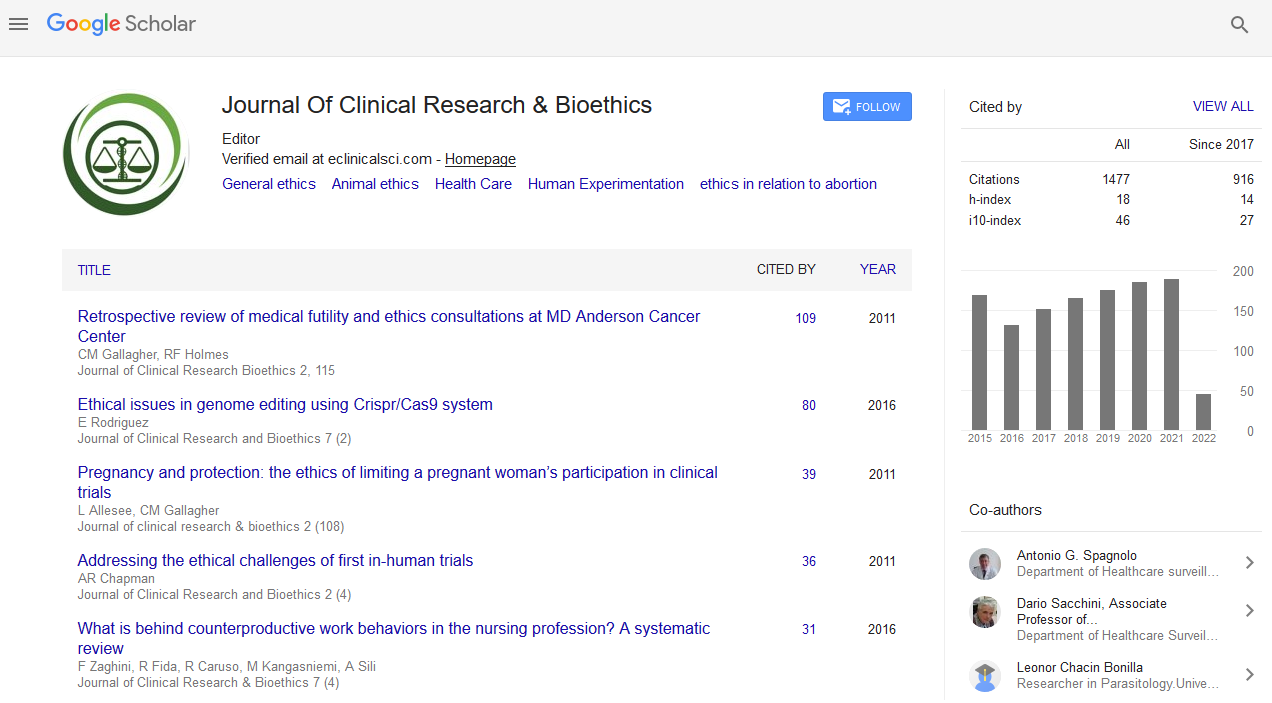PMC/PubMed Indexed Articles
Indexed In
- Open J Gate
- Genamics JournalSeek
- JournalTOCs
- RefSeek
- Hamdard University
- EBSCO A-Z
- OCLC- WorldCat
- Publons
- Geneva Foundation for Medical Education and Research
- Google Scholar
Useful Links
Share This Page
Journal Flyer

Open Access Journals
- Agri and Aquaculture
- Biochemistry
- Bioinformatics & Systems Biology
- Business & Management
- Chemistry
- Clinical Sciences
- Engineering
- Food & Nutrition
- General Science
- Genetics & Molecular Biology
- Immunology & Microbiology
- Medical Sciences
- Neuroscience & Psychology
- Nursing & Health Care
- Pharmaceutical Sciences
Editorial - (2020) Volume 11, Issue 4
Uterine Fibrosis
Mangaraju Gayatri*Received: 09-Oct-2020 Published: 30-Oct-2020, DOI: 10.35248/2155-9627.20.11.e120
Introduction
Uterine fibroids (also referred to as leiomyomas or myomas) are the foremost common sort of benign uterine tumors. Clinical presentations include abnormal bleeding, pelvic masses, pelvic pain, infertility, bulk symptoms and obstetric complications.
Uterine fibroids are benign growths within the uterus that affect quite 30% of girls of childbearing age. Symptomatic women suffer from extensive and prolonged menstrual bleeding, anaemia, pain, pressure and sometimes infertility. Existing treatment options include hysterectomy, myomectomy and arteria uterine embolization that are invasive and minimally invasive, involving hospitalization and a number of other weeks of recovery time. ExAblate is an outpatient procedure and patients return home the same day and to work within one to two days. Uterine leiomyomata (myomas, fibroids) which are the most common gynaecological disorder; as such, it should not be surprising that, over the centuries, a whole series of sometimes very strange approaches have been attempted and unlikely methods proposed, mostly unsupported by any scientific evidence.
Cramer and Patel estimated the prevalence of uterine fibroids based on clinical assessment at 33%, ultrasound scan at 50%, and histological examination of hysterectomy specimens at 77%. The reported frequency of the disease varies widely due to differences in study design. In fact, to determine the exact prevalence of fibroids, a correct clinical research should apply ultrasound scanning in a randomly sampled population.
Medical Treatment
Today, it is widely accepted that in subjects with asymptomatic uterine myomas who do not desire pregnancy, no special treatment is required and these patients need only periodic monitoring of their condition. For this reason, the most conservative options that minimize morbidity/risk and optimize outcomes should be selected.
Evidence on medical treatments has been systematically analysed in 2016 a total of 75 Randomized Controlled Trials (RCT), concluding that their overall quality was very low and that there was insufficient evidence to recommend any medical treatment in the management of fibroids. Interestingly, the same year another systematic review after evaluating 52 studies, reached a different conclusion, namely that published information proves the efficacy of a number of agents, opening-up promising avenues for the development of medical alternatives to surgery.
Risk Fact
Even if many risk factors suggested by epidemiologic studies have linked uterine leiomyomas to the effects of estrogens and progesterone levels and their metabolism, other mechanisms may be involved in fibroids pathogenesis. In fact, recently, some have questioned the exact role of female hormones (estrogens and progesterone) in the development and growth of uterine fibroids.
A rapid increase of fibroid incidence after the age of 30. This could be the result of time-related hormonal changes or an enhanced symptomatology from already existing fibroids. Furthermore, the high incidence of fibroids in the perimenopausal period could be responsible for increasing gynecologic surgery rates in women who have completed the childbearing period.
Conclusion
The etiopathology of uterine fibroid remains unclear, multifactorial, and enigmatic. Classic studies showed steroid dependence of myomas for growth and development. The genetic background seems to play an important role, with cytogenetic anomalies observed in about 40% of uterine fibroids. Abnormal ECM expression, increased growth factors, cytokines and chemokines concentrations, and an extracellular disorganized matrix have been implicated in development and growth of uterine leiomyomas.
Citation: Gayatri M (2020) Uterine Fibrosis. J Clin Res Bioeth. 11:e120. doi: 10.35248/2155-9627.20.11.1000e120
Copyright: © 2020 Gayatri M. This is an open-access article distributed under the terms of the Creative Commons Attribution License, which permits unrestricted use, distribution, and reproduction in any medium, provided the original author and source are credited.


